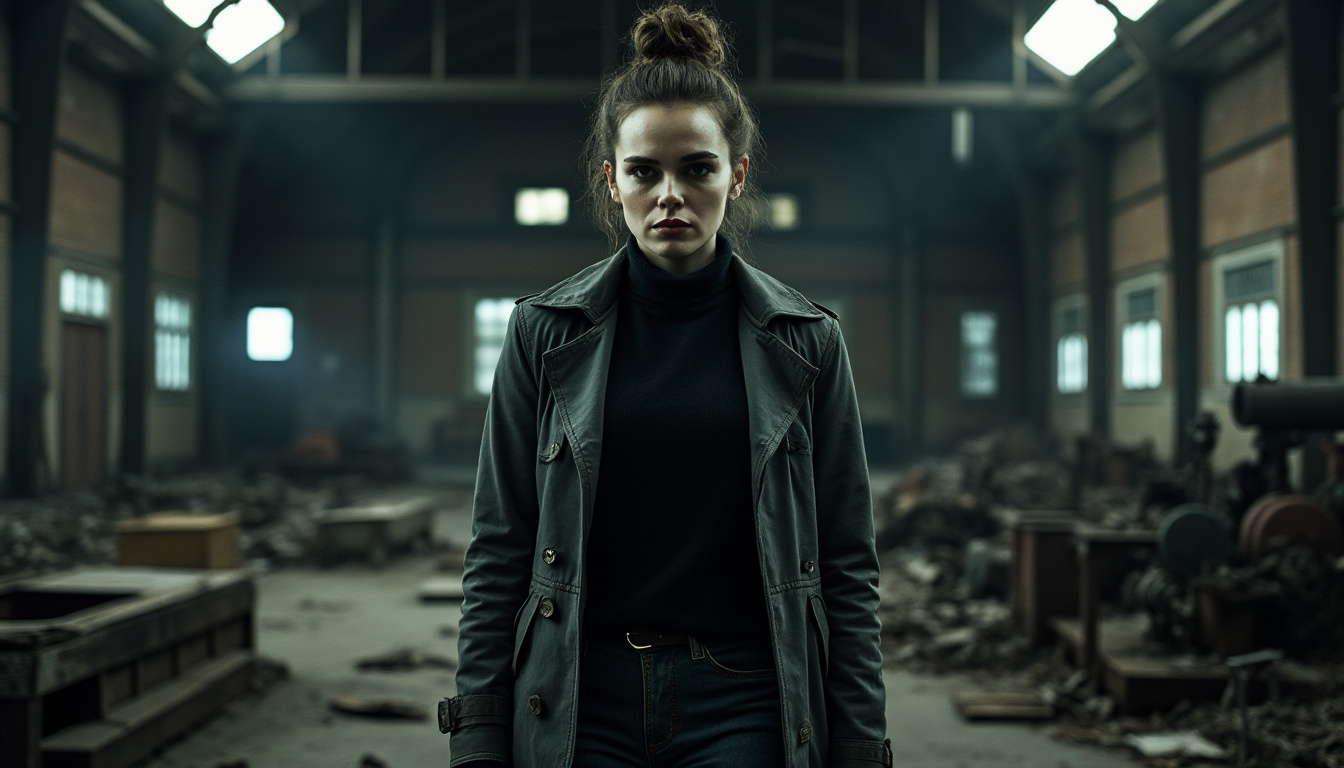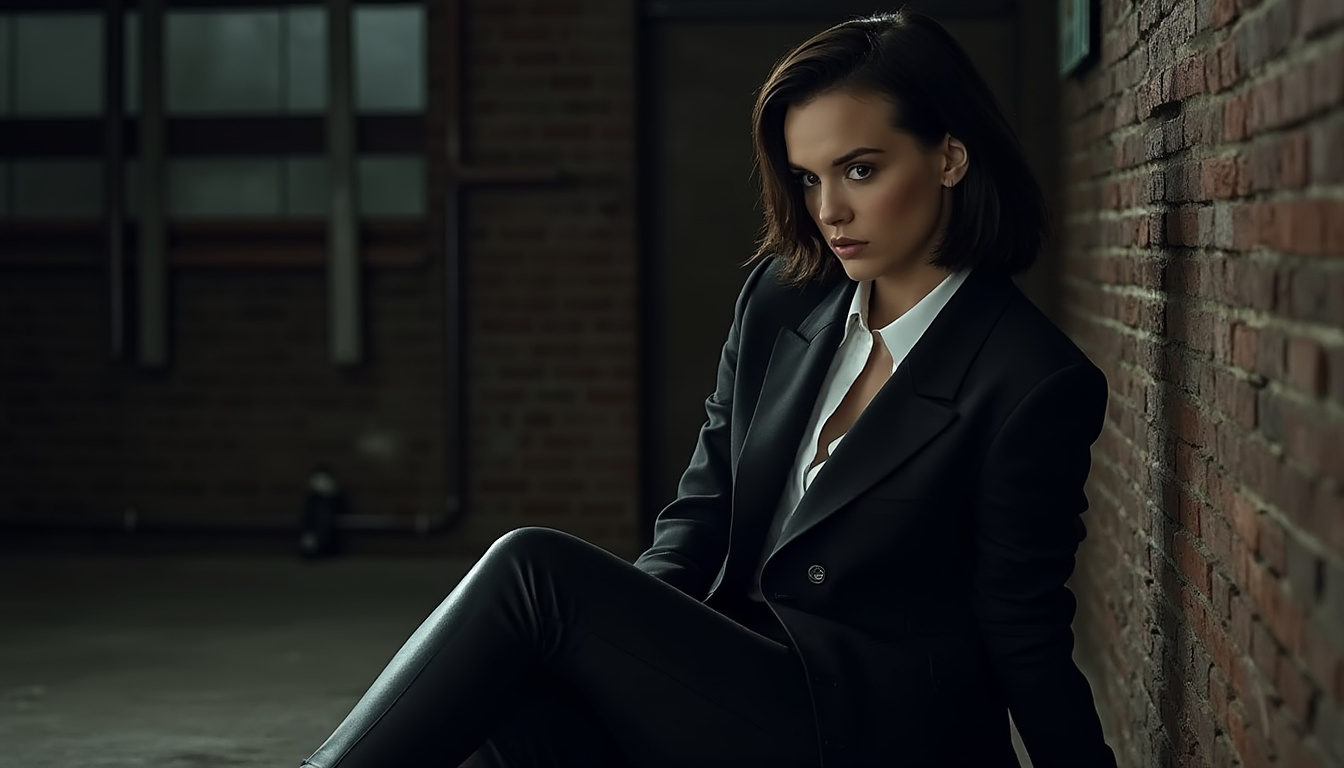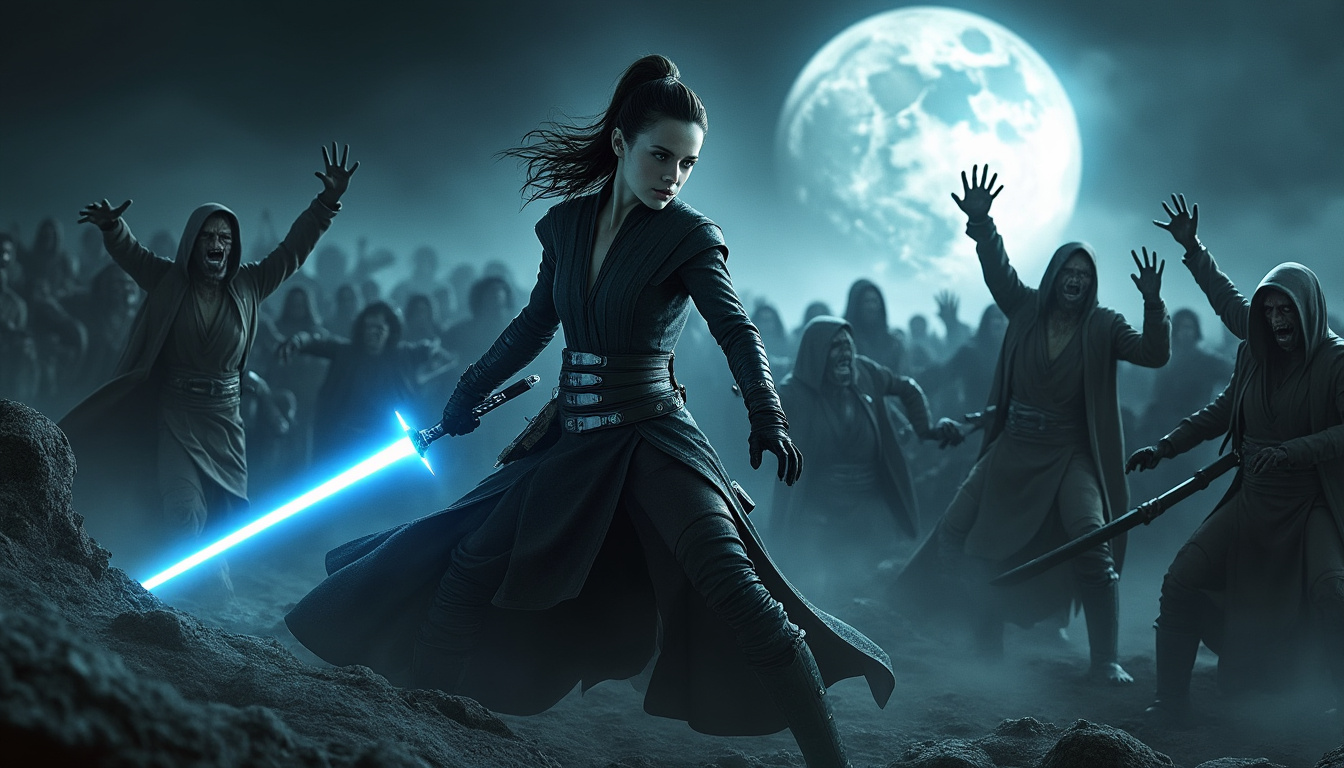The excitement surrounding the upcoming release of the survival thriller We Bury the Dead is palpable, especially with the inclusion of Daisy Ridley, best known for her role in the Star Wars franchise. The film’s teaser trailer promises a gripping storyline set in a post-apocalyptic world where the line between life and death blurs in terrifying ways. Scheduled for release on January 2, 2026, this project is shaping up to be a standout in the horror genre, particularly as it tackles themes of loss, tragedy, and survival against the backdrop of a military experiment gone awry.
Plot Overview: A Glimpse into We Bury the Dead
The narrative follows Ava, a woman consumed by grief as she searches for her missing husband after a disastrous American military experiment devastates Tasmania. The official synopsis reveals that Ava joins a body retrieval unit tasked with identifying the deceased, but her journey quickly spirals into chaos when she discovers that the corpses they are attempting to bury are miraculously coming back to life.

This intriguing setup hints at an exploration of humanity’s response to loss and overwhelming circumstances. The film weaves a horror narrative that is not merely about the undead but delves deeper into emotional responses to grief and the profound impacts of devastation on individuals and communities. Ava’s character arc is set against a haunting backdrop, presenting opportunities for intense performances and emotional depth.
As Ava traverses the ravaged landscape, audiences are taken along a harrowing journey filled with peril and suspense. Here are some key themes that will likely be explored:
- Survival: The fundamental instinct to survive becomes central to Ava’s quest, both physically and emotionally.
- Grief: The pain of losing a loved one, particularly in the wake of such a traumatic event, acts as a powerful motivation for Ava.
- Reanimation Terror: The resurrected corpses symbolize not only physical danger but also a reflection of unresolved feelings and past traumas.
This blend of horror and emotional storytelling positions We Bury the Dead as more than just a typical zombie film. The unique narrative structure highlights the psychological impact of its themes, promising an engaging experience for viewers.
| Element | Description |
|---|---|
| Genre | Survival Thriller/Horror |
| Release Date | January 2, 2026 |
| Director | Zak Hilditch |
| Key Themes | Grief, Survival, Terror |
The Creative Minds Behind We Bury the Dead
The film is directed and written by Zak Hilditch, a filmmaker recognized for his ability to merge suspense with thought-provoking narrative elements, as seen in his previous works like 1922. His directorial approach is characterized by a focus on character-driven storytelling, ensuring that the emotional stakes remain high even in moments of horror. Hilditch’s films often challenge viewers to contemplate profound moral dilemmas, elevating them beyond conventional genre entries.
In addition to Ridley, the cast features an impressive lineup, including actors such as Brenton Thwaites, known for his stint on Titans, and Mark Coles Smith, who has garnered acclaim for his performances in Mystery Road: Origin. Their involvement adds depth to the film, hinting at complex character interactions that could be pivotal to the storyline.
Collaborators in the production include esteemed professionals who contribute their expertise to various aspects of filmmaking, ensuring a polished final product. The creative team features individuals like editor Merlin Eden and production designer Clayton Jauncey, both of whom play crucial roles in crafting the film’s visual style and pace.
Audience Expectations and Anticipation
As trailers and promotional materials circulate, audience anticipation for We Bury the Dead continues to build. One of the critical conversations among fans centers on how this film fits within the larger landscape of zombie narratives in cinema. With the genre saturated by countless iterations, the expectations for innovation are high.
While the film undoubtedly features traditional aspects of horror—such as tense atmospheres and menacing creatures—it distinctly focuses on the psychological dimensions of survival horror. The teaser trailer gives glimpses of intense moments that promise to keep audiences on the edge of their seats, whilst the storyline enriches the experience by addressing deep-seated themes of love, loss, and resilience.
How We Bury the Dead Compares to Other Zombie Films
Comparisons are inevitable in the realm of post-apocalyptic narratives, particularly those involving zombies. Key elements often highlight the film’s unique approach:
- Character-Centric Focus: Unlike many horror films where the focus is on surviving the undead, We Bury the Dead emphasizes Ava’s emotional journey.
- Social Commentary: The film may also critique military interventions and their aftermath, setting it apart from conventional zombie apocalypse films.
- Complex Antagonists: Rather than portraying the undead as mindless monsters, the reanimated corpses could symbolize deeper fears and emotional struggles.
By tackling these themes, We Bury the Dead can resonate on a different frequency compared to its genre counterparts. Markers of cinematic success often blend both horror and heart, offering an experience that lingers long after the credits roll.
| Comparison Element | We Bury the Dead | Typical Zombie Film |
|---|---|---|
| Focus | Character emotions & survival | Action & horror tropes |
| Theme | Grief, trauma & social critique | Survival & violence |
| Undead Portrayal | Symbolic & metaphorical | Threatening & mindless |
Viewing Platforms and Release Strategy
With films transitioning from theaters to streaming platforms, anticipation for We Bury the Dead spans different viewing experiences. Premiering theatrically before possibly reaching platforms like Netflix, Hulu, and Amazon Prime, the distribution strategy aims to attract audiences from various demographics. The film’s release in early January positions it strategically to garner attention during post-holiday moviegoing, drawing in horror fans eager for fresh content.

The implications of a film’s distribution are significant, with similar horror films successfully transitioning to streaming services for wider accessibility, increasing viewership, and opportunities for discussion and analysis among fans and audiences. Given the rising demand for engaging content and horror narratives, We Bury the Dead is likely to create buzz across platforms, enhancing its lifespan in popular culture.
This strategic approach resonates with success observed in franchises like Marvel or recent offerings from Disney, where audience engagement extends far beyond the initial release, fostering communities around the content. Establishing dialogue among viewers can amplify the film’s cultural relevance and pave the way for potential sequels or expanded universes.
Exploring New Horror Trends
The horror genre constantly evolves, adapting to societal changes and audience expectations. Aspects of We Bury the Dead reflect the composition of contemporary horror, where emotional depth and social commentary are becoming increasing focal points. This trend can be traced through various critically acclaimed films from the last few years, emphasizing *A24*’s contributions to the genre, ranging from relationship-focused narratives to societal critiques interweaved with horror elements.
- Thematic Depth: Contemporary audiences favor horror that provokes thought and reflection.
- Cultural Commentary: Films addressing current societal issues resonate more profoundly.
- Character Development: Engaging characters transform the horror experience into something meaningful.
As the landscape of horror continues to shift, expectations for We Bury the Dead increase, creating excitement for audiences eager to witness how it contributes to these evolving narratives and expectations.


